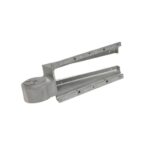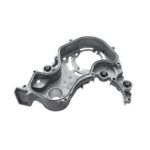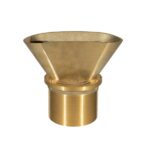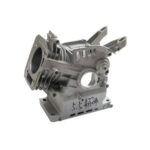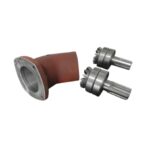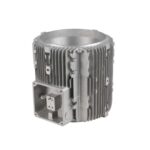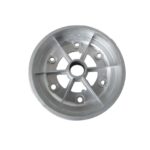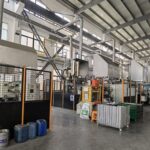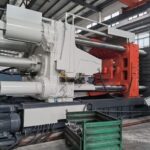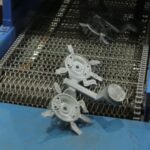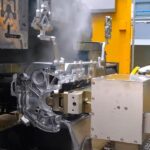Looking for a casting process that can handle complex shapes, tight tolerances and an excellent surface finish?
Investment casting (also called lost-wax or precision casting) is designed exactly for that. It uses disposable wax patterns and ceramic shells to produce near-net-shape metal parts with minimal machining and very consistent quality.
Below is a quick look at when investment casting is – and isn’t – the right solution for your project.
When to Use Investment Casting
| Situation | Is Investment Casting a Good Fit? | Why |
|---|---|---|
| Complex, small–medium parts with tight tolerances | Yes – ideal | Near-net shape, excellent detail and surface finish |
| Thin walls, undercuts, internal passages | Yes – often best choice | Wax patterns and ceramic shells can reproduce fine geometry |
| Very large, simple parts | Usually No – consider sand casting | Simpler tooling, easier to handle large castings |
| Very high volume, simple non-ferrous parts | Often No – consider die casting | Die casting has higher tooling cost but lowest piece price at very high volumes |
| One-off prototypes without tooling | Not ideal | Investment casting needs patterns and shell building; for pure prototypes, machining or 3D printing may be better |
What Is Investment Casting (Lost-Wax Casting)?
Investment casting is a precision casting process that uses a disposable wax pattern to create a highly detailed ceramic mould. After the wax is removed, molten metal is poured into the ceramic shell to form the final part.
Because the pattern is made from wax (or similar materials), it can include very fine details, thin walls and complex internal shapes that are difficult or impossible to achieve with many other casting methods. Once the ceramic shell is broken away, the result is a near-net-shape metal part that usually requires only minimal machining.
You will often see the terms investment casting, lost-wax casting and precision casting used interchangeably. In modern manufacturing, they all refer to this same process.
Typical reasons engineers choose investment casting:
- Tight dimensional tolerances
- Smooth, high-quality surface finish
- Ability to combine multiple features into one casting
- Flexibility to work with many different metals and alloys
How the Investment Casting Process Works
Step 1 – Wax Pattern Creation
The process begins with a wax pattern that is an exact replica of the final metal part (including gates and runners where needed). The pattern can be produced by:
- Injecting wax into a metal die (most common for series production)
- 3D printing or machining wax/resin patterns for prototypes or lower volumes
A high-quality pattern is essential, because any defect in the wax will be reproduced in the finished casting.
Step 2 – Pattern Assembly into a Tree
Individual wax patterns are assembled onto a central sprue to form a “tree”. This allows multiple parts to be cast in a single ceramic shell, improving efficiency and consistency.
The design of this tree affects metal flow, shrinkage and yield, so an experienced foundry will optimise the gating for each project.
Step 3 – Ceramic Shell Building
The wax pattern tree is repeatedly dipped into a ceramic slurry and then coated with fine sand or stucco. After each layer dries, the process is repeated until a robust ceramic shell of the required thickness is built up.
- Finer sands are used close to the pattern to capture surface detail.
- Coarser layers on the outside provide strength to withstand pouring and handling.
Shell building is one of the most time-consuming stages of the process and has a strong impact on lead time and cost.
Step 4 – Dewaxing and Shell Firing
Once the shell is fully dried, the assembly is heated so that the wax inside melts and is drained out. This “dewaxing” step leaves a hollow ceramic cavity in the exact shape of the original patterns.
The empty ceramic shell is then fired at high temperature. Firing:
- Strengthens the shell
- Removes remaining wax residues
- Preheats the mould so molten metal can fill fine details more effectively
Step 5 – Metal Melting and Pouring
The specified alloy is melted in a furnace under controlled conditions. When it reaches the correct temperature, the molten metal is poured into the preheated ceramic shells.
Depending on the alloy and part requirements, pouring may be done by gravity, vacuum, low-pressure, or with other special techniques to minimise porosity and defects.
Step 6 – Cooling, Knock-Out and Cut-Off
The metal is allowed to cool and solidify inside the ceramic shell. After solidification:
- The outer ceramic shell is broken away
- Individual castings are cut from the central sprue
- Gates and risers are removed
At this stage, the castings already show the final geometry and surface detail.
Step 7 – Finishing, Inspection and Post-Processing
To meet final specifications, the castings may go through:
- Grinding, shot-blasting or polishing
- Heat treatment to adjust mechanical properties
- CNC machining of critical dimensions or threads
- Surface finishing such as anodizing, plating or painting
Dimensional and visual inspection – often including CMM, hardness tests and non-destructive testing where required – confirms that the parts meet drawing and customer standards.
What Materials Can Be Investment Cast?
One of the strengths of investment casting is its ability to work with a wide variety of alloys. This makes it useful in everything from aerospace components to consumer products.
Typical Metals and Alloys
Below are some of the most common material groups used in investment casting:
- Stainless steels (e.g. 304, 316, 17-4PH)
- Pumps, valves, food-processing equipment, medical instruments
- Excellent corrosion resistance and hygiene
- Carbon and alloy steels
- Structural brackets, levers, couplings, gears and wear parts
- High strength and toughness after heat treatment
- Aluminum alloys
- Lightweight housings, impellers, armatures, hardware
- Very good strength-to-weight ratio and machinability
- Copper-based alloys (brass and bronze)
- Plumbing and HVAC fittings, decorative hardware, marine components
- Good corrosion resistance and attractive appearance
- Special alloys (cobalt- or nickel-based, tool steels, etc.)
- High-temperature or high-wear environments
- Used where standard steels or aluminum are not sufficient
Choosing the Right Alloy for Your Part
Selecting the best alloy depends on several factors:
- Mechanical strength and toughness
- Corrosion and temperature resistance
- Weight and density requirements
- Surface finish and appearance
- Machinability and overall cost
A practical approach is to start from the operating environment and functional requirements, then narrow down alloy candidates. Our team can review your drawings and suggest suitable investment-casting alloys based on your performance and budget targets.
Typical Applications & Industries for Investment Casting
Because investment casting can reproduce intricate details with excellent consistency, it is popular across many sectors.
Automotive and Transportation
- Suspension and steering components
- Turbocharger and exhaust parts
- Brackets and housings for lightweight structures
Here, investment casting combines design freedom with high strength and good fatigue performance.
Medical and Instrumentation
- Surgical tools and implants
- Components for diagnostic equipment
- Precision instrument parts with fine features
The smooth surface finish and ability to use medical-grade stainless steels make investment casting a strong candidate in this field.
Energy, Pumps and Valves
- Pump and impeller components
- Valve bodies and internals
- Flow-control and measurement parts
Investment casting handles complex internal passages and tight dimensional control, which are critical for flow performance and sealing.
Machinery, Robotics and General Industry
- Gear housings, levers, clamps and couplings
- Conveyor and material-handling parts
- Precision brackets and mounting hardware
In these applications, engineers often use investment casting to combine several machined components into a single near-net-shape casting, reducing assembly time and cost.
Investment Casting vs Other Casting Processes
Investment casting is not always the only option. Understanding its position relative to sand casting and die casting helps you choose the right process for each project.
Investment Casting vs Sand Casting
- Geometry and detail
- Investment casting: excellent for complex shapes, thin walls, undercuts and fine surface details.
- Sand casting: better suited for simpler shapes and larger parts.
- Surface finish and tolerances
- Investment casting: much smoother surfaces and tighter dimensional control; often less machining required.
- Sand casting: rougher surface, larger tolerances; machining is commonly needed.
- Part size and tooling cost
- Investment casting: economic for small to medium parts; ceramic shell and wax tooling add cost.
- Sand casting: more flexible and economical for very large castings and lower tooling investment.
For projects where size is moderate and accuracy matters, investment casting usually offers a better balance of quality and cost.
Investment Casting vs Die Casting
- Materials
- Investment casting: works with a wide range of ferrous and non-ferrous alloys (steel, stainless, aluminum, brass, etc.).
- Die casting: most common with non-ferrous alloys such as aluminum, zinc and magnesium.
- Tooling and volume
- Investment casting: tooling costs are lower than die casting, making it suitable from low to medium production volumes.
- Die casting: very high tooling cost but extremely low piece price at high volumes, ideal for mass production.
- Part performance
- Investment casting: generally denser structures and fewer internal pores; good for high-stress components.
- Die casting: excellent for complex non-ferrous parts where ultra-high volume is required.
For a deeper breakdown focused specifically on advantages and disadvantages, you can later create a separate blog and link it from this section.
Tolerances, Surface Finish and Part Size Guidelines
Investment casting is chosen when quality and consistency are important. However, every project still needs realistic engineering expectations.
Typical Dimensional Tolerances
Exact tolerances depend on alloy, part size and geometry, but as a general guideline:
- Small features can often achieve ±0.1–0.3 mm
- Larger dimensions may have proportionally larger tolerances
After reviewing your drawings and 3D models, a foundry will confirm achievable tolerances and suggest adjustments if needed.
Surface Finish and Detail Resolution
Investment casting can provide:
- Very smooth surface finishes straight from the mould
- Sharp edges, logos, lettering and other fine details
- Minimal draft angles compared with many other casting methods
These features often reduce or eliminate secondary machining, especially on cosmetic or non-critical surfaces.
Recommended Part Size and Weight Range
Most foundries focus on small to medium-sized parts, from a few grams up to several kilograms. While larger parts are possible, they become more challenging and may be better suited to sand casting.
When you share your part size, wall thickness and weight target, we can quickly advise whether investment casting is a suitable option.
Investment Casting FAQs
1. What is investment casting used for?
Investment casting is used for precision metal components that require intricate shapes, tight tolerances and a good surface finish – for example, turbine blades, medical instruments, pump components, brackets and housings.
2. Is investment casting better than sand casting?
Neither process is “better” in all situations. Investment casting is generally preferred for smaller, more complex parts that need tight tolerances and a smooth surface. Sand casting is often more economical for large, simple components.
3. What are the main steps in the investment casting process?
Key stages include creating wax patterns, assembling them into a tree, building the ceramic shell, dewaxing and firing, pouring the molten metal, breaking off the shell, and then finishing and inspecting the castings.
4. What information do I need to provide for an investment casting quote?
Ideally, send 2D drawings and 3D models, your annual volume estimate, target material or performance requirements, any critical dimensions/tolerances, and notes on surface finish or post-processing.
5. Can you provide prototypes before full production?
Yes. Prototypes can be made using temporary patterns (for example 3D-printed wax or resin) before committing to full production tooling, allowing you to validate design and function.
6. What post-processing services are available after casting?
Typical options include heat treatment, CNC machining, drilling and tapping, polishing, blasting, and surface coatings such as anodizing, plating or painting, depending on the alloy and application.
Partner with Yongzhu Casting for Your Investment Cast Parts
Yongzhu Casting combines over 20 years of experience in aluminum and other alloy castings with modern investment-casting equipment and strict quality control. We help you turn complex designs into reliable, repeatable parts.
When you work with us, you can expect:
- Design and DFM support – we review your drawings and help optimise parts for investment casting.
- One-stop production – investment casting combined with CNC machining and surface finishing.
- Quality assurance – material certificates, dimensional inspection and functional checks according to your requirements.
Send us your drawings or 3D models, and our engineers will evaluate whether investment casting is the right process for your project and suggest the most cost-effective manufacturing route.


